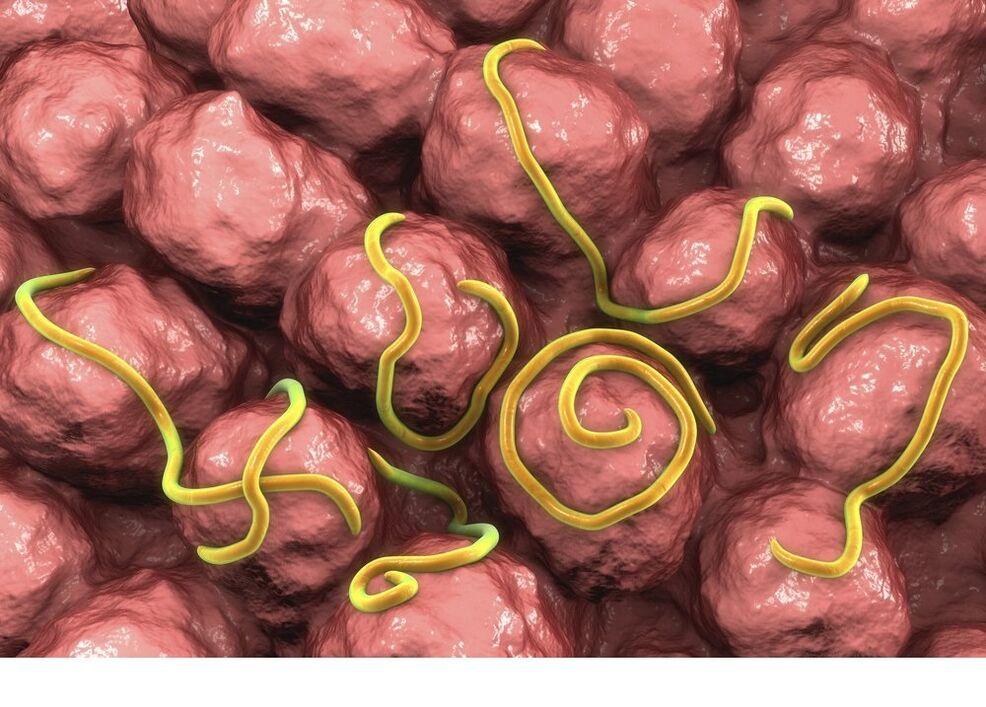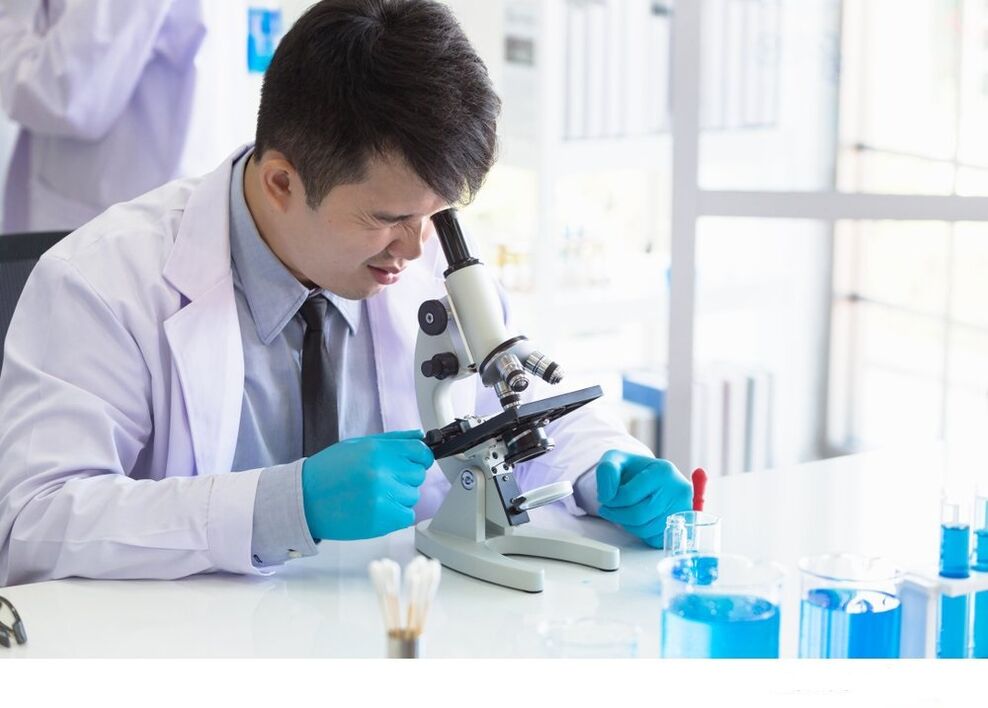Helminthiasis or diseases caused by worms are one of the most common diseases in humans. According to a rough estimate by experts from the World Health Organization, one in four people on the planet is infected with one or another type of worm. This is not surprising, because you can get this virus almost anywhere in the world. Doctors equate the incidence of helminthiasis with the spread of influenza and ARVI.
Doctors estimate that the scale of worm infections in our country is 270 cases per 100, 000 population, but according to experts, the actual incidence is several times higher. This is because a person usually does not even notice that an uninvited guest has entered his body. If the worm does not manifest itself in any way, the disease may go undiagnosed for decades.
All about worms
Parasitic worm, worm or worm?
This huge biota has several names at the same time. First, we are talking about parasites, which are creatures that live at the expense of others. In addition, we are talking about endoparasites, which live in another organism-in its tissues and organs. Finally, we are talking about worm-like organisms, which are very suitable for long-term survival and effective reproduction in infected animals.
Therefore, worms are parasitic worms. Hippocrates introduced the term "worm". Among people, these nasty creatures are also called worms-from the ancient Greek word, just a kind of parasitic worm.
Therefore, when it comes to worms, we will not misunderstand and call them worms or parasitic worms. If we talk about helminthiasis, these diseases can also be called "parasitic infections".
Various human worms

Scientists know a total of 287 worms that can parasitize humans. In my country, only 65 species have been identified, of which only 24 are the most common.
Human worms are spread all over the body, and each species has its own preferences.
Basically, worms prefer the gastrointestinal tract, mainly the small intestine, where roundworms, pinworms, three kinds of tapeworms, tapeworms, hookworms, etc. can be found. Vlasoglav monopolizes the large intestine.
In the liver, more precisely in its bile ducts, and in the gallbladder, flukes, posterior testes, etc. can be found. Paragonimus settles in the lungs. Trichinella affects muscles. The adult pork tapeworm lives in the small intestine, and its larvae (cysticercus) can be seen in the eyes and central nervous system. Schistosomiasis (worms from tropical regions) prefer the veins of the gastrointestinal tract and genitourinary system.
Filarias are usually ubiquitous-they can be found in the lymphatic system and closed body cavities-in the retroperitoneal space, in the pericardial sac, and their larvae are usually found in the blood or skin.
Types of worms living in humans
The types of worms that doctors are most interested in are divided into two main types: flat and round (nematodes). The classification is based on the cross-section of the insect body: round worms are round, and flatworms are flattened from the conditional back to the conditional abdomen. Flatworms are further divided into two categories: flukes (flukes) and tapeworms (taenia).
- Nematode. Most nematodes are inhabitants of the human intestine. This group includes roundworms, pinworms, trichinella, whipworms, etc. , and their sizes vary greatly from each other-ranging from a few millimeters to 1. 5 meters. They all have their own well-developed digestive system. Nematodes are male and female. It is not difficult to distinguish among adults: females are usually twice as large as they are, and in males, the "tail" twists toward the "abdomen".
- fluke. The body shape of the fluke resembles a leaf or a lancet, and its size cannot be compared to other worms: these are small worms, ranging from a few millimeters to 3. 5-5. 5 centimeters long. Unlike roundworms, flukes have a pair of suckers in the mouth and abdomen. Their digestive system is still in its infancy. A large part of this group of species are hermaphrodite, that is, they combine characteristics of both sexes. Schistosoma is an exception, it has males and females.
- Cestodes. Cestodes are worms. It is a long band, divided into short sections, with a head with a hook and a suction cup at one end. These worms only live in the small intestine-their entire body is not suitable for any other organs. This is not surprising, because tapeworms can reach 10-11 meters in length. They don't need a digestive system at all, because they can absorb everything they need from the food that people eat. All tapeworms are hermaphrodite.
The organisms that worms live in the larval stage are called intermediate hosts (which can be animals, fish, molluscs, and of course humans), and the carriers of adult worms are called final hosts.
Depending on whether a given type of worm has a developmental stage in the intermediate host, they are also called biological helminthiasis and soil helminthiasis.
- Ground worms have no such stage. The worm eggs fall into the soil, waiting for fate to enter the body of the future owner. Ground worms include whipworms, roundworms, hookworms and so on.
- Biological worms have such a stage and may have several hosts. Examples include Trichinella spiralis, tapeworms, schistosomes, all flatworms, etc.
Now, some scientists distinguish the third type of worms-infectious worms, including pinworms (ground worms) and dwarf tapeworms (biological worms) through transmission mechanisms. These parasites are spread through contact with infected people.
In addition, humans and zoonotic diseases are separated according to which hosts play a key role in the life of the worm.
- The first category includes helminthiasis, in which a person is an inevitable stage in its life cycle: ascariasis, pinworm disease, etc.
- Zoonotic diseases include helminthiasis. The pathogen can successfully exist without humans, but at the same time our species is also susceptible to them. If infection does occur, then worms will not interfere with life and prosperity. This category includes pretesticular disease, bilobal filariasis and so on.
How does a parasitic infection occur?
In most cases, people will be infected with worms. It can be said that oral administration means swallowing worm eggs. The most notable example is pinworms, where children can pick up pinworm eggs in a sandbox (a way of spreading infections through family contact). The digestive tract (through food) is a characteristic of roundworms-through contaminated vegetables or fruits and flukes, it enters the human body when eating contaminated but improperly heat-treated seafood or meat.
However, food is not the only way to infect worms. Eggs can enter the human body by inhaling dust. Hookworms and schistosomes enter the human body through the skin-they are called infectious worms, and the route of infection is transdermal. Since schistosomes can be infected while swimming in a pond, this route of infection is also called the aquatic infection route.
In the tropics, there are filamentous plants, which are also wuchereria, which are spread with the help of mosquito bites. This is a vector-borne infection transmission route.
Parasitic infections can also occur through contact with animals-infected cats and dogs. Usually, people infect roundworms (roundworms, etc. ) and tapeworms from animals. In the process of licking, pets carry worm eggs through their fur. A person who does not wash his hands immediately after petting such an animal may inject the infection into his mouth. Another option for worm infection is to clean the trash can without wearing gloves.
What are the effects of parasites on the body?

Mechanical shock
This category includes any worm behavior that undermines the integrity of the host tissue. For example, adult worms with hooks and suction cups fix themselves with their help while destroying the gastrointestinal mucosa. As a result, tissue erosion occurs in the localized area of the worm, ulcers are formed, the nutritional process of the mucosa is destroyed, and it may even lead to its death (necrosis).
Moving in the body, so-called migrating larvae can also cause bleeding and inflammation in the damaged area-which makes it easier for them to penetrate into the tissues. The worms in the intestines often cause appendicitis, intestinal obstruction or even rupture.
Finally, the cysticercus, which enters the brain and actively grows there, squeezes the tissue, which may cause the death of a person.
Host malnutrition
First, the worms themselves "rob" the host and eat the food they have eaten. Second, some human worms themselves feed on blood-this is what hookworms and whipworms do, or they absorb substances needed for hematopoiesis. Therefore, in the context of parasitic infection, anemia may occur.
With long-term chronic infection of worms, worms will absorb nutrients with metabolic value, and a protein-calorie deficiency is diagnosed.
Use worm toxins to poison the human body
The metabolites of whipworms and tapeworms can destroy red blood cells, and roundworm secretions can cause capillaries to dilate, which can lead to bleeding.
Some parasitic worms begin to increase their risk after death, releasing substances that are necrotic and blood toxic.
Allergic to worm protein
Worms are foreign organisms to us, so our body considers many of the proteins they secrete (during life activities or after death) as potential dangers, and may regard them as antigens. In the process of being sensitive to these antigens, antibodies-immunoglobulin IgE and IgG-4 are formed. When these antibodies come into contact with mast cells, basophils, and eosinophils, they are destroyed. At the same time, it releases substances (allergic mediators) that trigger allergic reactions-histamine, serotonin, heparin, etc.
Suppress the body's defenses
The negative effects of worms on the body may be indirect. As mentioned above, tapeworms located in the small intestine cause a decrease in gastric acidity. This significantly reduces the protection of pathogens from invading the body.
Many worms have immunosuppressive ability, that is, they inhibit the body's defenses, thus ensuring a long and comfortable survival. This is the evolutionary adaptation they have acquired in the process of adapting to the narrow host circle. But the suppression of the human immune system can lead to increased vulnerability to other infections and diseases.
Cancer risk

Some chronic helminthiases can significantly increase the likelihood of cancer. Parasites destroy tissues and organs during their life activities, thereby causing the development of malignant tumors there. Cancer often occurs in the context of posterior clonorchiasis, schistosomiasis, and clonorchiasis.
Stages of the course of helminthiasis
What are the symptoms of helminthiasis? After the worm enters the body, the symptoms of the infection will depend on the stage of the disease.
During helminthiasis, there are four main stages:
- The acute (early) stage of helminthiasis. At this stage, the infectious pathogen enters the body, causing the body to become sensitive to the worm's protein. The first symptoms of worms appear 2-4 weeks after infection. An allergic-like reaction usually occurs during this period-itchy rash, conjunctivitis, cough, swollen lymph nodes, joint inflammation, analysis shows increased eosinophil concentration, etc.
- Latent (potential) period. At this stage, the worm develops into an adult state and finally determines its permanent habitat, after which the helminthiasis enters the chronic stage.
- Chronic (late) stage. At this stage, the adults actively reproduce, producing millions of eggs and larvae, which enter the external environment or spread to other organs of the body. Children's worms can cause muscle cramps, seizures-epilepsy, hysteria, etc. The doctor pointed out that all these signs of helminthiasis are not specific and are similar to the symptoms of many other diseases, so they cannot be diagnosed. More precisely, there are several types of worms, and their symptoms are very characteristic, but even they should be checked with multiple tests.
- The exodus stage. The term means that the patient fully recovered or became disabled in the context of the complications of helminthiasis. These include metrchiasis and malignant tumors in schistosomiasis, liver cirrhosis and so on.
Worms: symptoms of infection

The impact of worm invasion (worm invading his body) on the human body is determined by many factors: the way of invasion, the degree of infection, the duration of the disease and the lifespan of the worm, its characteristic nutrition and development cycle.
Generally speaking, doctors will distinguish the following symptoms of worm infection. If these symptoms occur, you should consult your doctor and perform an examination:
- Periodic frequent nausea and vomiting, abdominal pain;
- Often allergic;
- Sleep disorders, chronic fatigue, irritability;
- Itching in the anal area;
- Frequent urinary tract infections;
- Chronic gastrointestinal diseases, ecological disorders;
- Symptoms of chronic body poisoning: frequent colds, blue circles under the eyes, pale face, swollen lymph nodes;
- Vulvovaginitis;
- Increased eosinophil level in blood test results;
- Delayed growth and weight.
The question arises: If the worm settles in the body, will the symptoms of the infection appear immediately or after a while? Are there worms that are difficult to detect signs of infection? The doctor pointed out that in the case of non-intensive invasiveness, the initial symptoms of helminthiasis may appear within a month or two, or may appear after a few years. In other words, during this period, no signs of worm infection can be seen.
Manifestations of parasitic infection in children
Worms are more common in children than in adults. This is due to lack of hygiene skills and close contact with the environment, which may be the source of worm eggs. Such an environment can be a sandbox on a playground, a bed in a grandmother’s villa, and other people’s toys played by an infected child.
When children are infected with intestinal nematodes, which complaints are most frequently recorded:
- Gastrointestinal dysfunction-75% of children;
- Allergic reaction-71%;
- Sleep disorders-54%;
- Appetite disorder-44%;
- Abdominal pain-40%;
- Itching in the anal area-36%.
Rarely, in the context of infection with worms, children develop immune disorders (19%) and bruxism, that is, teeth grinding (16%). This is a paradox, but these two symptoms are usually considered signs of worms.
Diagnosis of helminthiasis
What are the worm checks?

It should be understood that worm analysis alone is not enough. None of the existing methods for detecting parasites can be used as the basis for making a definite diagnosis. According to the doctor, in some cases, a positive result can only be obtained for the 8th-10th time! There may be many reasons for this situation: females lay eggs at different intervals, which do not coincide with the time of sampling. The biological material samples are actually empty because they are taken in the wrong place. The disease is at such a stage and it is almost impossible to choose. The method and so on decided.
The most common types of worm analysis are the study of worm egg feces, perianal scraping, duodenal content analysis, patient lung biomaterial analysis, and worm blood testing.
In rare cases, urine is needed for diagnosis (schistosomiasis of the urogenital system, pinworm disease), and a biopsy method is used to sample the worms of the patient's muscle (trichinosis).
How to detect worm eggs in feces?

For worm analysis, 50 grams of patient's stool is sufficient (approximately 1 tablespoon). Today, you can buy a special clean container for testing in the pharmacy, where you need to collect the feces of the worm eggs. It is best to send the sample to the laboratory on the same day (for strongyloidiasis and tonicity-no later than 4 hours after collection). If necessary, you can store the worm stool sample at a temperature of 0 to 4°C for no more than a day, and it is absolutely impossible to freeze it. In principle, special preservatives can be used so that the samples can be stored for up to several months.
Gua Sha perianal-analysis of worm eggs
Perianal scrapers are used to diagnose helminthiasis, such as pinworm disease, tapeworm disease, and tapeworm disease. Unlike the fecal analysis of worms, the scraping material is collected from the skin around the anus using cotton swabs, wooden scrapers, glass eye patches, or tape. The procedure of collecting material for analysis of worm eggs is carried out in the early morning, and patients should not wash themselves at night or in the morning.
An important point: Even if the worms are repeatedly analyzed in this way, the reliability of the results in the case of enterobiasis cannot be guaranteed. Female pinworms lay eggs on a regular basis. If you do not catch the "right time", then you can be sure that there are no eggs-no worms.
Analysis of duodenal contents (bile)
Use an empty stomach tube to collect bile. Because this method is invasive (different from methods such as worm egg stool, urine collection, and perianal curettage), it should only be used for strict indications when a specific helminthiasis is reasonably suspected. Check the strongyloides and hookworm larvae in the bile, and analyze the various parts of the bile for the presence of worm eggs that live in the pancreas and liver ducts.
Blood test for worms

In addition to the above methods, there are so-called serological methods for diagnosing helminthiasis. In this case, blood tests for the worms, more precisely, to detect their antibodies.
The main serological method today is enzyme-linked immunosorbent assay (ELISA), which is known for its high specificity and highest sensitivity (90%) among all other methods. In other words, it allows you to very accurately determine which worms a person is infected with, and allows you to detect them, even if they are rare. The reliability of ELISA is 60%. ELISA is extremely relevant to the detection of so-called tissue helminthiasis, in which worms live in the patient's organs and tissues (trichinosis, toxoplasmosis).
Instrumental method for diagnosing worms
Using the aforementioned laboratory diagnostic methods, including the use of immunological analysis methods, is far from always detecting worms. Some parasitic worms have a dense sac that can resist external influences. They can also hide in tissues that are somewhat protected from the body's inflammatory response—such as the spinal cord. Certain types of worms have their own means of protection-anti-enzymes. Those worms that can reproduce by sexually exchanging genetic information. Given the speed of their reproduction and generational renewal, it is not surprising that these worms become less susceptible to the means of detecting and treating parasitic infections over time.
If the analysis of worms, blood and other methods in the feces is not effective, in this case, the method of instrument diagnosis can be used to detect such parasites-X-ray, ultrasound, computer tomography and other liver and tissues. The spleen, the latter with enlarged lymph nodes, and finally, in some cases-Echinococcus, large clusters of tangled intestinal worms-you can see the parasite itself.
Treatment of helminthiasis
Through repeated experiments, traditional medicine has discovered many plants with insect repellent properties: poplar, pumpkin, chamomile, tansy, male ferns, etc. Later, in the era of scientific drugs, scientists isolated active substances from them, which actually have the effect of repellent:
- Cucurbitacin (pumpkin seeds);
- Artemisinin annual wormwood);
- Roundworm (Ambergris);
- santonin (citrine wormwood);
- Thymol (Thyme);
- Conetoside (Pomegranate Root);
- Carvacrol (oregano, thyme, bergamot);
- diospirol (persimmon);
- Areca nut (betel nut);
- Pyrethrin (Dalmatian chamomile);
- Trichomycin (poplar wood);
- Nicotine (tobacco) and its isomer anabazine (tobacco and barnyardgrass);
- emetine (emetic root).
Today, quite a few anthelmintics contain the same active substances that used to provide anthelmintic effects in decoctions and tinctures.
in conclusion
- Helminthiasis is one of the most common diseases in the world. In his environment, anyone has a 100% chance of infecting humans and animals.
- But if the number of individuals in the body is small, and the body itself is generally healthy, the disease can be asymptomatic for many years without manifesting itself in any way.
- Even if a regular physical examination every three years or an annual check-up, there is no guarantee that a person is truly free of parasites.
- The signs of worms in the body may be very similar to the symptoms of other diseases. Therefore, if for some reason continuous treatment for intestinal diseases and other similar conditions does not help, you should consider a worm test.
- Based on the results of a worm analysis, a diagnosis of helminthiasis cannot be made because false positive and false negative results are possible. You should not try to be tested independently and randomly-it is best to consult a doctor: based on the sum of symptoms, nutritional data, and travel data, he will choose to be able to pinpoint whether a person has worms or not.
- You cannot prescribe medications to treat worms on your own. Worm remedies may have contraindications for certain patients, and can cause serious injury if used improperly.






































